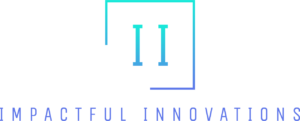What Is a Setter Closer in Sales?
The term “setter closer” refers to a powerful two-person sales strategy designed specifically for high-ticket offers. In this model, one person—the setter—focuses on generating and qualifying leads, while the closer is responsible for converting those leads into paying clients. Together, they form a streamlined system that improves conversion rates and creates a more efficient sales process. Unlike traditional sales roles where one individual handles everything from prospecting to closing, the setter closer model separates responsibilities for greater impact. Setters are specialists in outreach and engagement, while closers are experts at turning interest into commitment. This team-based approach is becoming increasingly common in remote sales, especially in coaching, online education, SaaS, and consulting industries. The model is designed to save time, increase revenue, and create scalable sales systems for businesses and entrepreneurs.
The Role of the Setter: Opening the Door to Opportunity
Setters are the frontline professionals who make the first meaningful contact with potential buyers. Their job is to identify warm leads, build rapport, and schedule qualified appointments for the closer. They often operate through outbound messaging, email outreach, cold calling, or social media DMs, depending on the business model. A great setter is skilled in active listening, emotional intelligence, and persuasive communication. Their ability to ask the right questions helps uncover pain points, determine fit, and move the prospect to the next stage. Setters don’t sell the product or service directly—instead, they prepare the ground for the closer to do so effectively. The best setters work with structured scripts and use tools like CRM platforms to track conversations and follow up consistently. Their primary metric of success is the number and quality of calls booked for the closer.
The Role of the Closer: Converting Warm Leads into Clients
Closers are the finishers. Once the setter has scheduled a call with a qualified prospect, the closer steps in to conduct a high-converting sales conversation. These professionals are trained in handling objections, building urgency, and leading the buyer to a confident purchasing decision. A closer must quickly establish authority and empathy, creating a trusted environment where prospects feel heard and guided. Using a structured call framework—often with a discovery phase, problem exploration, solution positioning, and offer presentation—they move the conversation toward action. The goal is not manipulation but alignment: helping the right prospect say yes to the right offer. A great closer understands psychology, tonality, and timing. They work closely with setters to provide feedback on lead quality and adjust messaging strategies. Compensation for closers is often commission-based, making performance a top priority.
Why Businesses Use the Setter Closer Model for High-Ticket Sales
This two-step sales process offers clear advantages for businesses offering premium products or services. One key benefit is specialization—when each team member focuses on a specific task, performance improves across the board. Setters can generate more leads without the pressure of closing, while closers can dedicate full energy to sales conversations. This structure allows businesses to handle higher volumes of leads while maintaining quality interactions. It also reduces burnout, as each role plays to its strengths. Industries such as business coaching, online marketing, B2B consulting, and virtual education frequently rely on this model to close deals over $3,000 or more. The setter closer strategy supports scalability because it’s easier to onboard and train team members for specific roles. For business owners, it means more predictable revenue and a better customer experience from the first touchpoint to the final sale.
How to Start a Career as a Setter or Closer
Becoming a professional setter or closer doesn’t require a traditional degree—what matters most is skill, training, and drive. Many professionals begin by enrolling in remote closing or sales certification programs that focus on high-ticket offers. Setters need to master messaging, follow-up strategies, and qualification frameworks. Closers need to learn objection handling, pitch structures, and emotional rapport. Internships and sales bootcamps can offer hands-on experience with real leads and mentorship. The remote nature of these roles means you can work from anywhere, provided you have a reliable internet connection and a professional work setup. Over time, setters can graduate into closing roles or become team leads. There are plenty of opportunities to find work via Facebook groups, LinkedIn, and sales-focused freelance platforms. Strong communication and the ability to learn quickly are critical traits for anyone starting this career path.
Tools Every Setter Closer Duo Should Be Using
To operate efficiently, both setters and closers need access to robust tools. A customer relationship management (CRM) system is essential for tracking leads, follow-ups, and pipeline stages. Popular CRMs like HubSpot, GoHighLevel, and Pipedrive are often used in remote sales environments. Setters often rely on automation tools to send messages, set reminders, and manage outreach sequences. Scheduling tools like Calendly or Acuity streamline the process of booking calls with prospects. Closers benefit from call recording software such as Zoom or Gong for reviewing and improving their conversations. Shared dashboards help both roles maintain visibility and align on goals. Communication platforms like Slack or ClickUp help the team stay in sync. When the right tech stack is in place, it amplifies the effectiveness of the setter closer workflow dramatically.
Common Mistakes Setters and Closers Must Avoid
Even skilled sales professionals can fall into traps that reduce performance. Setters sometimes overqualify or push unready leads to the closer, which results in wasted time and low conversion rates. On the other hand, under-qualifying leads can leave closers dealing with cold prospects who were never a good fit. A lack of communication between the two roles often leads to missed opportunities and misalignment. Another issue is relying too heavily on scripts without adapting to the individual prospect. For closers, ignoring red flags during a call or using pressure tactics can damage trust and brand reputation. It’s also a mistake to neglect performance tracking—both roles should review KPIs like call show rates, close percentages, and revenue generated. The most effective teams constantly refine their process through feedback and data.
Optimizing Communication Between Setter and Closer
Seamless communication is the key to a high-performing setter closer team. Daily check-ins help ensure both parties are on the same page regarding booked appointments and prospect readiness. A documented handoff process minimizes confusion and sets clear expectations for each lead. Setters should provide notes on each prospect’s pain points, goals, and objections, which allows closers to personalize their pitch. Tools like shared spreadsheets or CRM comments can help keep this information organized and accessible. Closer feedback helps setters refine their messaging and better identify ideal clients. Celebrating wins and learning from losses together creates team unity and motivation. With mutual respect and collaboration, this dynamic duo becomes an unstoppable revenue engine.
What It’s Like to Work as a Remote Setter Closer Team
Many professionals are drawn to the setter closer model because of the flexibility and high income potential it offers. Both roles can be performed remotely, allowing you to work from home or while traveling. However, remote sales work requires self-discipline, time management, and reliable tech. Time zone differences can sometimes create challenges in scheduling and follow-up, so proactive planning is key. A typical day for setters includes sending outreach messages, booking calls, and following up on previous leads. Closers spend their time preparing for and conducting calls, reviewing objections, and closing deals. Performance is usually tracked via dashboards and reviewed in regular team meetings. With commission-based compensation, your earnings directly reflect your results—making it a lucrative and fast-paced career path.
Frequently Asked Questions (FAQ)
What is the main difference between a setter and a closer?
A setter is responsible for finding and qualifying leads, while a closer conducts the sales call and secures the deal. Each plays a distinct but equally important role in the high-ticket sales process.
Can one person be both a setter and a closer?
Yes, some professionals perform both roles, especially in small businesses. However, as teams grow, separating the roles improves efficiency and allows for greater specialization.
What industries use the setter closer model the most?
Industries such as online coaching, consulting, SaaS, B2B services, and real estate commonly use this model for high-ticket sales.
How much can you earn as a setter or a closer?
Setters typically earn a base rate plus bonuses for booked and qualified calls. Closers often earn commissions on deals closed, with potential monthly earnings ranging from $3,000 to $10,000+.
Are certifications required to become a closer?
Certifications aren’t required but can help. Remote sales programs and mentorships can significantly improve your skill set and credibility.




